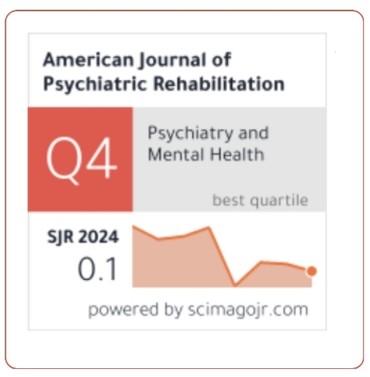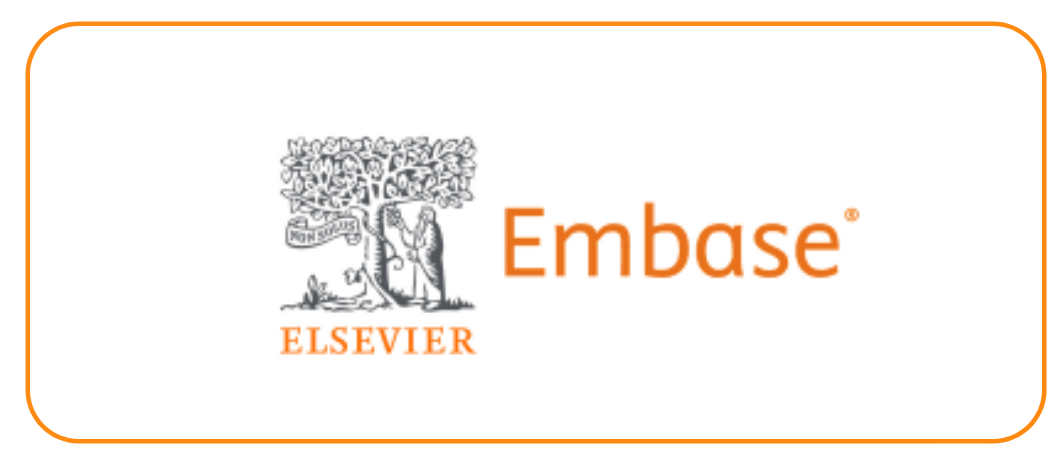Synthesis of dioxolylethan-1-one-containing isatin-based chalcone derivatives and their antibacterial activity
DOI:
https://doi.org/10.69980/ajpr.v28i1.97Keywords:
Anti-Bacterial, Claisen-Schmidt, eco-friendly, green chemistry, chalcone, computational.Abstract
Isatin-based chalcone derivatives (3a-b) have garnered significant attention due to their versatile biological activities and potential therapeutic applications. Our research goes to the development of new small molecules of isatin-containing druglikeness using the Claisen Schmidt reaction. Actually, analytical techniques like FT-IR, 1H, 13C NMR, and HRMS were deployed for the reporting to successfully characterize. As a preliminary investigation, synthesized compounds were passed through the computed strategy to find out the druglikeness properties. Further, the in-vitro analysis was conducted for synthesized compounds against representative bacteria B. pumilis (MTCC 160), B. cerius (MTCC1305), E. coli (ATCC 25923) and K. pneumoniae (NCTC418) obtained from NCIM, Pune (INDIA). n this study, the synthesized compound 3a, showed more significant activity against E. coli (ATCC 25923) at 93.5 µg/ml .While other strains like B. cerius (MTCC1305), Klebsiella pneumonia (NCTC418) and B. Pumilis (MTCC 160) at 187.2μg/ml, 156.5μg/ml and 156.25 μg/ml. This study emphasizes the relevance of combining synthetic chemistry and computational approaches to speed up drug development procedures using isatin-based chalcone derivatives.
References
1. Gangarapu, K., Thumma, G., Manda, S., Jallapally, A., Jarapula, R. and Rekulapally, S., 2017. Design, synthesis and molecular docking of novel structural hybrids of substituted isatin based pyrazoline and thiadiazoline as antitumor agents. Medicinal Chemistry Research, 26, pp.819-829.
2. Karati, D., 2024. An insight into isatin and its hybrid scaffolds as anti-cancer agents: an explicative review. Discover Chemistry, 1(1), pp.1-16.
3. Eldeeb, M., Sanad, E.F., Ragab, A., Ammar, Y.A., Mahmoud, K., Ali, M.M. and Hamdy, N.M., 2022. Anticancer effects with molecular docking confirmation of newly synthesized isatinsulfonamide molecular hybrid derivatives against hepatic cancer cell lines. Biomedicines, 10(3), p.722.
4. Oseroff, A.R., Ara, G., Ohuoha, D., Aprille, J., Bommer, J.C., Yarmush, M.L., Foley, J. and Cincotta, L., 1987. Strategies for selective cancer photochemotherapy: antibody‐targeted and selective carcinoma cell photolysis. Photochemistry and photobiology, 46(1), pp.83-96.
5. Cheke, R.S., Patil, V.M., Firke, S.D., Ambhore, J.P., Ansari, I.A., Patel, H.M., Shinde, S.D., Pasupuleti, V.R., Hassan, M.I., Adnan, M. and Kadri, A., 2022. Therapeutic outcomes of isatin and its derivatives against multiple diseases: Recent developments in drug discovery. Pharmaceuticals, 15(3), p.272.
6. Rohila, Y., Sebastian, S., Ansari, A., Kumar, D., Mishra, D.K. and Gupta, M.K., 2024. A Comprehensive Review of the Diverse Spectrum Activity of 1, 2, 3‐Triazole‐linked Isatin Hybrids. Chemistry & Biodiversity, 21(4), p.e202301612.
7. Polshettiwar, V., Nadagouda, M.N. and Varma, R.S., 2009. Microwave-assisted chemistry: a rapid and sustainable route to synthesis of organics and nanomaterials. Australian Journal of Chemistry, 62(1), pp.16-26.
8. Lavecchia, A. and Cerchia, C., 2016. In silico methods to address polypharmacology: current status, applications and future perspectives. Drug Discovery Today, 21(2), pp.288-298.
9. Bekono, B.D., Ntie-Kang, F., Owono Owono, L.C. and Megnassan, E., 2018. Targeting cysteine proteases from Plasmodium falciparum: a general overview, rational drug design and computational approaches for drug discovery. Current Drug Targets, 19(5), pp.501-526.
10. Vander Heiden, M.G., 2011. Targeting cancer metabolism: a therapeutic window opens. Nature reviews Drug discovery, 10(9), pp.671-684.
11. Short, N.J., Kantarjian, H., Ravandi, F. and Daver, N., 2019. Emerging treatment paradigms with FLT3 inhibitors in acute myeloid leukemia. Therapeutic Advances in Hematology, 10, p.2040620719827310.
12. Chauhan, G., Pathak, D.P., Ali, F., Dubey, P. and Khasimbi, S., 2022. In-vitro evaluation of isatin derivatives as potent anti-breast cancer agents against MCF-7, MDA MB 231, MDA-MB 435 and MDA-MB 468 breast cancers cell lines: a review. Anti-Cancer Agents in Medicinal Chemistry (Formerly Current Medicinal Chemistry-Anti-Cancer Agents), 22(10), pp.1883-1896.
13. Iqbal, M.J., Kabeer, A., Abbas, Z., Siddiqui, H.A., Calina, D., Sharifi-Rad, J. and Cho, W.C., 2024. Interplay of oxidative stress, cellular communication and signaling pathways in cancer. Cell Communication and Signaling, 22(1), p.7.
14. World Health Organization, 2021. The selection and use of essential medicines: report of the WHO Expert Committee on Selection and Use of Essential Medicines, 2021 (including the 22nd WHO model list of essential medicines and the 8th WHO model list of essential medicines for children).
15. Manhas, A., Kediya, S. and Jha, P.C., 2022. Pharmacophore modeling approach in drug discovery against the tropical infectious disease malaria. Front. Comput. Chem, 6(6), pp.132-192.
16. Alanen, O., 2017. Development of Two Fluorine-18 Labeled Prostate-Specific Membrane Antigen In-hibitors for Positron Emission Tomography Imaging of Prostate Cancer.
17. I. Azad, M. Nasibullah, T. Khan, F. Hassan, and Y. Akhter, “Exploring the novel heterocyclic derivatives as lead molecules for design and development of potent anticancer agents,” Journal of Molecular Graphics and Modelling, vol. 81, pp. 211–228, May 2018, doi: 10.1016/J.JMGM.2018.02.013.
18. A. Daina, O. Michielin, and V. Zoete, “SwissADME: a free web tool to evaluate pharmacokinetics, drug-likeness and medicinal chemistry friendliness of small molecules,” Scientific Reports 2017 7:1, vol. 7, no. 1, pp. 1–13, Mar. 2017, doi: 10.1038/srep42717.
19. H. Yang et al., “admetSAR 2.0: web-service for prediction and optimization of chemical ADMET properties,” Bioinformatics (Oxford, England), vol. 35, no. 6, pp. 1067–1069, Mar. 2019, doi: 10.1093/BIOINFORMATICS/BTY707.
20. Dhameja, M. and Pandey, J., 2018. Bestmann–Ohira Reagent: A Convenient and Promising Reagent in the Chemical World. Asian Journal of Organic Chemistry, 7(8), pp.1502-1523.
21. Daina, A., & Zoete, V. (2016). A boiled‐egg to predict gastrointestinal absorption and brain penetration of small molecules. ChemMedChem, 11(11), 1117-1121.
22. A.W. Baur, W.M.M. Kirby, J.C. Sherris, M. Turch, “Antibiotic susceptibility testing by a standardized single disk method,” Am J Clin Pathol., vol. 45, pp. 493-496, 1966.
23. D. Amsterdam, “Susceptibility testing of antimicrobials in liquid media,” In Lorian V. editor, Antibiotics in Laboratory Medicine, Baltimore, Williams &Wilkins, pp. 72–78, 1991.
24. Xiong, G., Wu, Z., Yi, J., Fu, L., Yang, Z., Hsieh, C., ... & Cao, D. (2021). ADMETlab 2.0: an integrated online platform for accurate and comprehensive predictions of ADMET properties. Nucleic acids research, 49(W1), W5-W14.
25. Dong, J., Wang, N. N., Yao, Z. J., Zhang, L., Cheng, Y., Ouyang, D., ... & Cao, D. S. (2018). ADMETlab: a platform for systematic ADMET evaluation based on a comprehensively collected ADMET database. Journal of cheminformatics, 10, 1-11.
26. Duan, Y. J., Fu, L., Zhang, X. C., Long, T. Z., He, Y. H., Liu, Z. Q., ... & Cao, D. S. (2023). Improved GNNs for log D 7.4 prediction by transferring knowledge from low-fidelity data. Journal of Chemical Information and Modeling, 63(8), 2345-2359.
27. Yu, J., Wang, J., Zhao, H., Gao, J., Kang, Y., Cao, D., ... & Hou, T. (2022). Organic compound synthetic accessibility prediction based on the graph attention mechanism. Journal of chemical information and modeling, 62(12), 2973-2986.
28. Dong, J., Wang, N. N., Liu, K. Y., Zhu, M. F., Yun, Y. H., Zeng, W. B., ... & Cao, D. S. (2017). ChemBCPP: a freely available web server for calculating commonly used physicochemical properties. Chemometrics and Intelligent Laboratory Systems, 171, 65-73.
29. Wu, J., Wan, Y., Wu, Z., Zhang, S., Cao, D., Hsieh, C. Y., & Hou, T. (2023). MF-SuP-pKa: Multi-fidelity modeling with subgraph pooling mechanism for pKa prediction. Acta Pharmaceutica Sinica B, 13(6), 2572-2584.
30. Long, T. Z., Shi, S. H., Liu, S., Lu, A. P., Liu, Z. Q., Li, M., ... & Cao, D. S. (2022). Structural analysis and prediction of hematotoxicity using deep learning approaches. Journal of Chemical Information and Modeling, 63(1), 111-125.
31. Yang, Z. Y., Yang, Z. J., Dong, J., Wang, L. L., Zhang, L. X., Ding, J. J., ... & Cao, D. S. (2019). Structural analysis and identification of colloidal aggregators in drug discovery. Journal of chemical information and modeling, 59(9), 3714-3726.
32. Yang, Z. Y., Dong, J., Yang, Z. J., Yin, M., Jiang, H. L., Lu, A. P., ... & Cao, D. S. (2021). ChemFLuo: a web-server for structure analysis and identification of fluorescent compounds. Briefings in bioinformatics, 22(4), bbaa282.
33. Yang, Z. Y., He, J. H., Lu, A. P., Hou, T. J., & Cao, D. S. (2020). Frequent hitters: nuisance artifacts in high-throughput screening. Drug discovery today, 25(4), 657-667.
34. Yang, Z. Y., He, J. H., Lu, A. P., Hou, T. J., & Cao, D. S. (2020). Application of negative design to design a more desirable virtual screening library. Journal of Medicinal Chemistry, 63(9), 4411-4429.
35. Wu, Z., Jiang, D., Wang, J., Hsieh, C. Y., Cao, D., & Hou, T. (2021). Mining toxicity information from large amounts of toxicity data. Journal of Medicinal Chemistry, 64(10), 6924-6936.
36. Jiang, D., Lei, T., Wang, Z., Shen, C., Cao, D., & Hou, T. (2020). ADMET evaluation in drug discovery. 20. Prediction of breast cancer resistance protein inhibition through machine learning. Journal of Cheminformatics, 12, 1-26.
37. Yang, Z. Y., Yang, Z. J., Lu, A. P., Hou, T. J., & Cao, D. S. (2021). Scopy: an integrated negative design python library for desirable HTS/VS database design. Briefings in Bioinformatics, 22(3), bbaa194.
38. Fu, L., Liu, L., Yang, Z. J., Li, P., Ding, J. J., Yun, Y. H., ... & Cao, D. S. (2019). Systematic modeling of log d 7.4 based on ensemble machine learning, group contribution, and matched molecular pair analysis. Journal of Chemical Information and Modeling, 60(1), 63-76.
39. Wu, Z., Lei, T., Shen, C., Wang, Z., Cao, D., & Hou, T. (2019). ADMET evaluation in drug discovery. 19. Reliable prediction of human cytochrome P450 inhibition using artificial intelligence approaches. Journal of chemical information and modeling, 59(11), 4587-4601.
40. Liu, L., Fu, L., Zhang, J. W., Wei, H., Ye, W. L., Deng, Z. K., ... & Cao, D. S. (2018). Three-level hepatotoxicity prediction system based on adverse hepatic effects. Molecular pharmaceutics, 16(1), 393-408.
41. Lei, T., Sun, H., Kang, Y., Zhu, F., Liu, H., Zhou, W., ... & Hou, T. (2017). ADMET evaluation in drug discovery. 18. Reliable prediction of chemical-induced urinary tract toxicity by boosting machine learning approaches. Molecular pharmaceutics, 14(11), 3935-3953.
42. Wang, N. N., Deng, Z. K., Huang, C., Dong, J., Zhu, M. F., Yao, Z. J., ... & Cao, D. S. (2017). ADME properties evaluation in drug discovery: Prediction of plasma protein binding using NSGA-II combining PLS and consensus modeling. Chemometrics and Intelligent Laboratory Systems, 170, 84-95.
43. Wang, N. N., Huang, C., Dong, J., Yao, Z. J., Zhu, M. F., Deng, Z. K., ... & Cao, D. S. (2017). Predicting human intestinal absorption with modified random forest approach: a comprehensive evaluation of molecular representation, unbalanced data, and applicability domain issues. RSC advances, 7(31), 19007-19018.
44. Lei, T., Chen, F., Liu, H., Sun, H., Kang, Y., Li, D., ... & Hou, T. (2017). ADMET evaluation in drug discovery. Part 17: development of quantitative and qualitative prediction models for chemical-induced respiratory toxicity. Molecular pharmaceutics, 14(7), 2407-2421.
45. Wang, S., Sun, H., Liu, H., Li, D., Li, Y., & Hou, T. (2016). ADMET evaluation in drug discovery. 16. Predicting hERG blockers by combining multiple pharmacophores and machine learning approaches. Molecular pharmaceutics, 13(8), 2855-2866.
46. Wang, N. N., Dong, J., Deng, Y. H., Zhu, M. F., Wen, M., Yao, Z. J., ... & Cao, D. S. (2016). ADME properties evaluation in drug discovery: prediction of Caco-2 cell permeability using a combination of NSGA-II and boosting. Journal of chemical information and modeling, 56(4), 763-773.
47. Lei, T., Li, Y., Song, Y., Li, D., Sun, H., & Hou, T. (2016). ADMET evaluation in drug discovery: 15. Accurate prediction of rat oral acute toxicity using relevance vector machine and consensus modeling. Journal of cheminformatics, 8, 1-19.
48. Hassan, F., Azad, I., Asif, M., Shukla, D., Husain, A., Khan, A. R., ... & Nasibullah, M. (2023). Isatin conjugates as antibacterial agents: a brief review. Medicinal Chemistry, 19(5), 413-430.
49. AzAd, I., Hassan, F., SAqUIb, M., Ahmad, N., Khan, A. R., Al-Sehemi, A. G., & NASIbULLAH, M. A. L. I. K. (2018). A critical review on advances in the multicomponent synthesis of pyrroles. Oriental Journal of Chemistry, 34(4), 1670.
50. Yadav, C. S., Azad, I., Khan, A. R., Ahmad, N., Gupta, S. K., Verma, V. K., ... & Lohani, M. B. (2024). Exploring the therapeutic potential of chalcones in oncology: A comprehensive review. Current Bioactive Compounds, 20(6), 12-47.
51. Yadav, C. S., Azad, I., Khan, A. R., Nasibullah, M., Ahmad, N., Hansda, D., ... & Lohani, M. B. (2024). Recent advances in the synthesis of pyrazoline derivatives from chalcones as potent pharmacological agents: A comprehensive review. Results in Chemistry, 7, 101326.
Downloads
Published
Issue
Section
License
Copyright (c) 2025 American Journal of Psychiatric Rehabilitation

This work is licensed under a Creative Commons Attribution 4.0 International License.
This is an Open Access article distributed under the terms of the Creative Commons Attribution 4.0 International License permitting all use, distribution, and reproduction in any medium, provided the work is properly cited.









